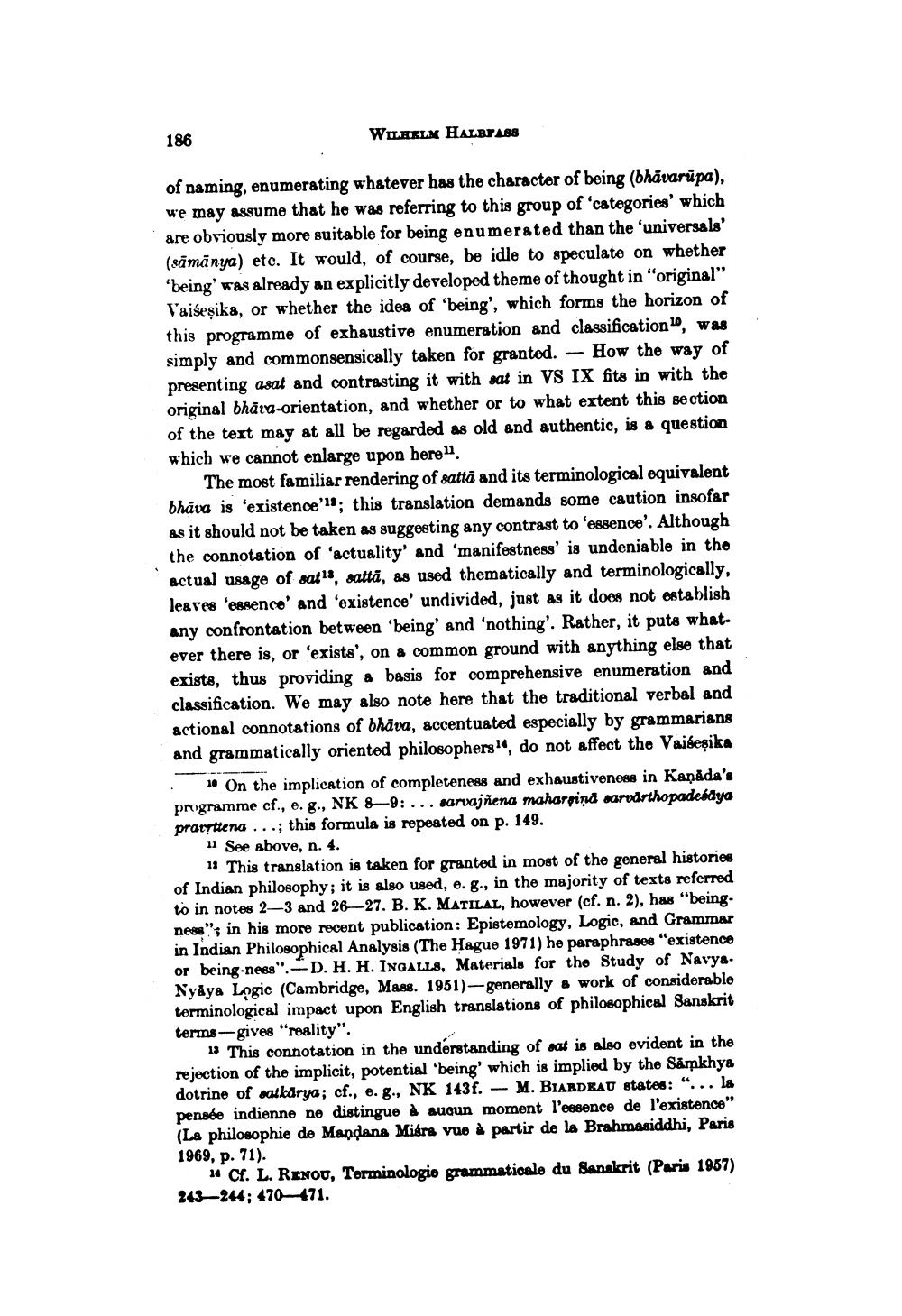________________
186
WILHELN HALBTA88
of naming, enumerating whatever has the character of being (bhavarupa), we may assume that he was referring to this group of 'categories' which are obviously more suitable for being enumerated than the 'universals' (sāmānya) etc. It would, of course, be idle to speculate on whether 'being' was already an explicitly developed theme of thought in "original" Vaišeşika, or whether the idea of 'being', which forms the horizon of this programme of exhaustive enumeration and classification, was simply and commonsensically taken for granted. - How the way of presenting asat and contrasting it with sat in VS IX fits in with the original bhāra-orientation, and whether or to what extent this section of the text may at all be regarded as old and authentic, is a question which we cannot enlarge upon here".
The most familiar rendering of sattā and its terminological equivalent bhāva is 'existence'13; this translation demands some caution insofar as it should not be taken as suggesting any contrast to 'essence'. Although the connotation of 'actuality' and 'manifestness' is undeniable in the actual usage of satis, sattă, as used thematically and terminologically, leaves 'essence' and 'existence' undivided, just as it does not establish any confrontation between 'being' and 'nothing'. Rather, it puts what. ever there is, or 'exists', on a common ground with anything else that exists, thus providing a basis for comprehensive enumeration and classification. We may also note here that the traditional verbal and actional connotations of bhāva, accentuated especially by grammarians and grammatically oriented philosophers", do not affect the Vaibesika · On the implication of completeness and exhaustiveness in Kanada's programme cf., e. g., NK 89: ... sarvajñena maharpind sarodrthopadeádya prarytiena ...; this formula is repeated on p. 149.
u See above, n. 4.
1 This translation is taken for granted in most of the general histories of Indian philosophy; it is also used, e. g., in the majority of texts referred to in notes 2-3 and 26-27. B. K. MATILAL, however (cf. n. 2), has "beingness" in his more recent publication: Epistemology, Logic, and Grammar in Indian Philosophical Analysis (The Hague 1971) he paraphrases "existence or being-ness".-D. H. H. INGALLS, Materials for the Study of Navya. Nyåya Logic (Cambridge, Mass. 1951)-generally a work of considerable terminological impact upon English translations of philosophical Sanskrit terms-gives "reality".
1 This connotation in the understanding of sat is also evident in the rejection of the implicit, potential 'being' which is implied by the Sårpkhya dotrine of satkarya; cf., e. g., NK 143f. - M. BIARDEAU states: “... la pensée indienne ne distingue à aucun moment l'essence de l'existence" (La philosophie de Mandana Misra vue à partir de la Brahmasiddhi, Paris 1969, p. 71).
1 Cf. L. RENOU, Terminologio grammaticale du Sanskrit (Paris 1957) 243244; 470–71.
has beinted
Made in Mateo 1971) hos Logic,




